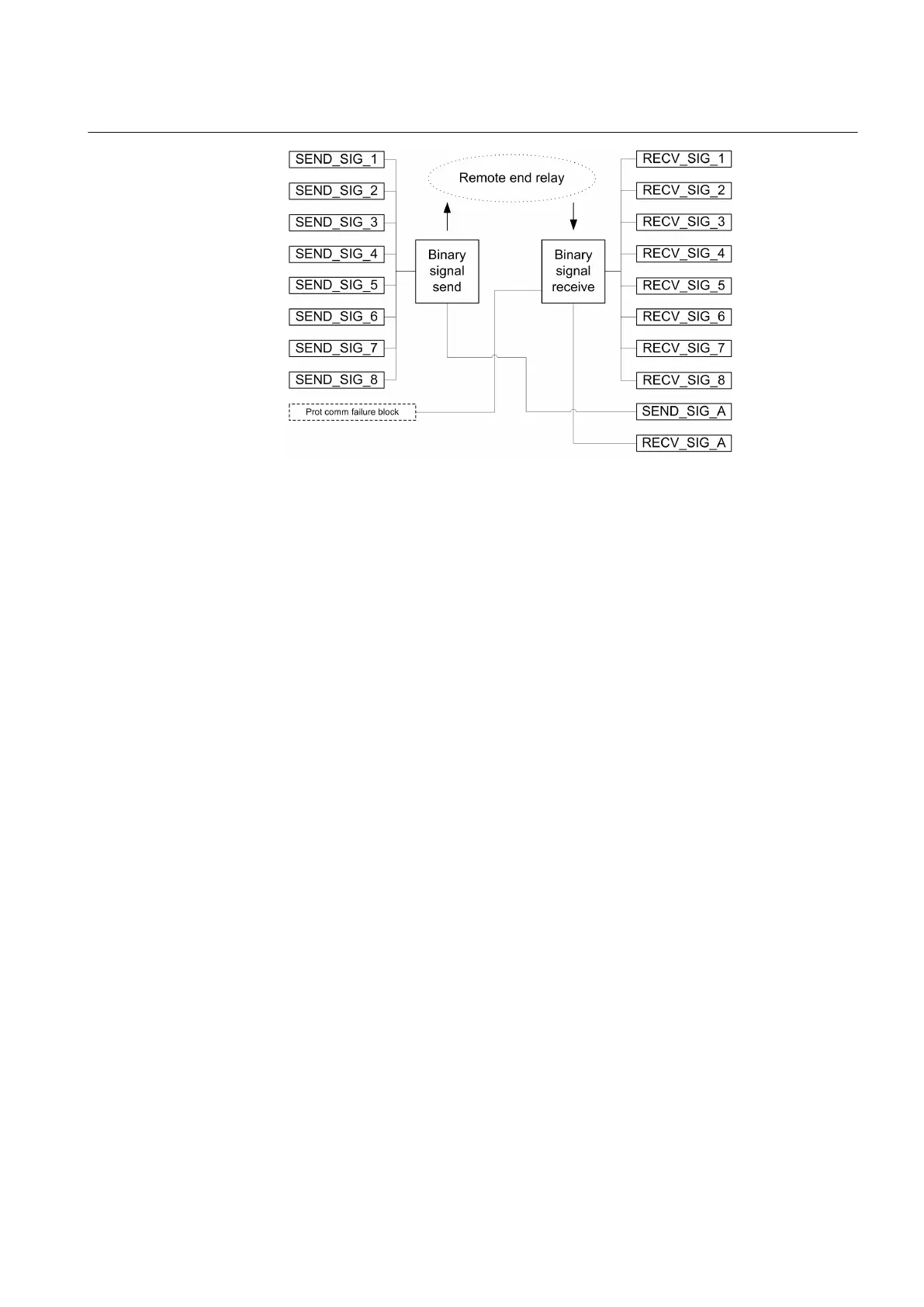GUID-54526C83-99FA-478B-877A-394234289F91 V1 EN
Figure 295: Functional module diagram
Binary signal send
The status of the inputs is continuously sent in the line differential protection
telegrams. SEND_SIG_A can be used for alarming based on the status of
SEND_SIG_1...8. By selecting the signal mode as "In use, alarm sel.", the
sending status of the corresponding signal affects also the activation criteria of
SEND_SIG_A. Further, in case more than one signal channels are selected into the
alarm logic, the activation criteria can be defined according to "Any of selected"
(OR) or "All of selected" (AND).
Binary signal receive
The function receives continuous binary data within the protection telegrams from
the remote end IED. This received binary data status is then available as the
RECV_SIG_1...8 outputs on the local end IED. RECV_SIG_A can be used for
alarming based on the status of RECV_SIG_1...8. By selecting the signal mode
as "In use, alarm sel.", the received status of the corresponding signal affects the
activation criteria of RECV_SIG_A. Further, in case more than one signal channels
are selected into the alarm logic, the activation criteria can be defined according to
"Any of selected" (OR) or "All of selected" (AND). Each signal has also the Pulse
time 1...8 setting that defines the minimum pulse length for RECV_SIG_1...8.
Also, in case the protection communication supervision detects a failure in the
communication, the RECV_SIG_1...8 outputs are not set to false sooner than
the minimum pulse length defined is first ensured for each signal.
5.4.5 Application
Among with the analog data, the binary data can also be exchanged with the line
differential protection IEDs. The usage of the binary data is application specific
1YHT530004D05 D Section 5
Protection related functions
615 series 557
Technical Manual

